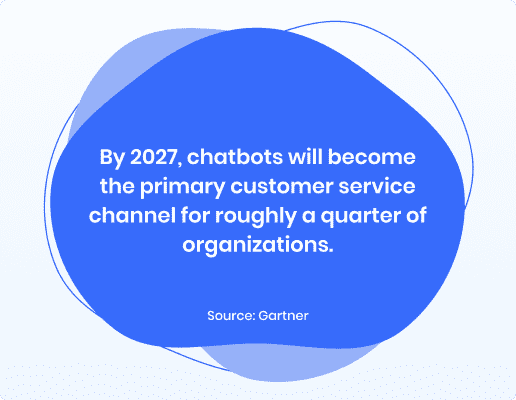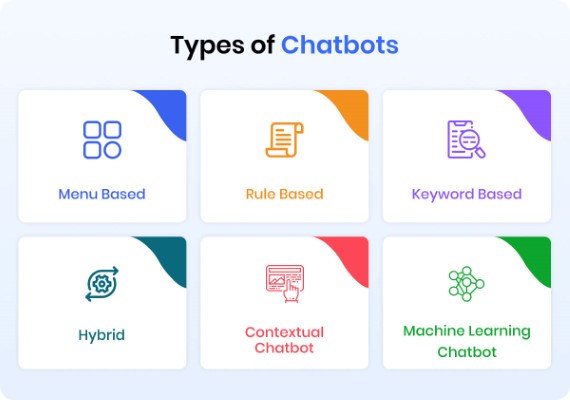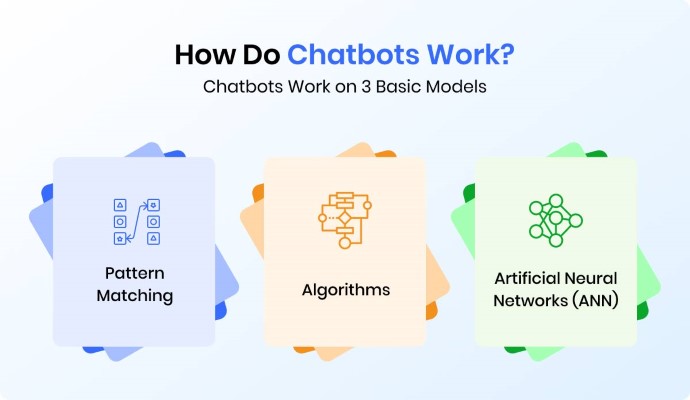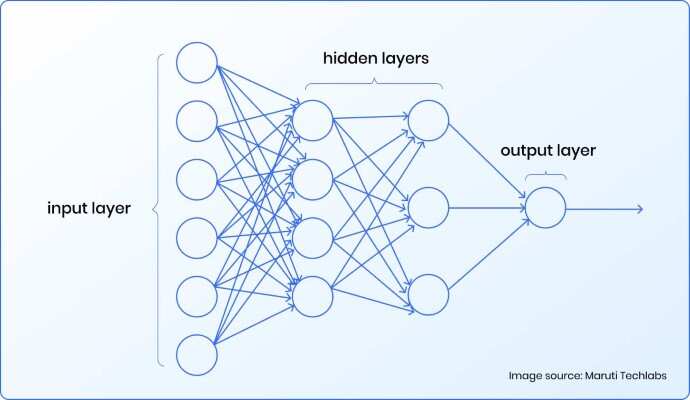While browsing several websites, or maybe getting in touch with a company, most of us must have encountered a very helpful and kind chatbot. The chatbots used to be very stiff and could answer only very generic questions. But with the invention of AI (Artificial Intelligence), chatbots have become smarter, much more intuitive, and can work efficiently in place of a human customer support agent. But one question always comes to our mind, “how do chatbots work?”
We all know that chatbots are in the trend for a couple of years now. Initially, we were a bit apprehensive about its usability, thinking that it would gradually fade away with time. But actually, we all were wrong. Soon, it has become a favorite for many businesses. No matter how big or small the company is, chatbots are more than a necessity for providing automated customer service and increased sales conversions.
As per a recent survey conducted by Facebook, more than 50% of people want to do business with companies that provide live chat services. Chatbots are getting popular too fast among both customers and organizations because of the user-friendly approach, reduced manpower, and waiting time.
Many of us want to know how chatbots work. Is it a complex process? Though it’s getting popular quickly, it is still a new concept for many of us. We all are still learning about the new technologies, how these chatbots work, how to use these bots in customer service, and so on.
So, let me prepare a useful guide for you here to give you an idea of what it actually is and how the chatbot work toward customer satisfaction.
What is a Chatbot?
For better understanding let me write this way- a chatbot is basically a computer program developed to talk to a human, it can understand what the person on the other side is saying and based on that responds instantly. For example, suppose you are trying to buy something from an online store and are stuck in the payment section. You can ask the chatbot about how to make the payment for placing an order, and it will help you. Sometimes, you won’t even understand that you are talking with a robot, not a real person. This is the beauty of chatbots.
Chatbots can mimic human interactions. Through textual data and voice commands, the interaction takes place between the machine and a real person. Chatbots can work independently without any kind of assistance. You need to configure the bots with various FAQs that customers tend to ask frequently.
Based on that, chatbots can respond to common queries. With AI chatbots, replying to customer queries has become more real. Pre-configured scripts ad Machine Learning (ML) algorithms help bots to independently interact with humans.
If you ask the bot a question, that is not programmed in its database, the whole chat interaction will be transferred to a real support agent without even letting you know about it. It’s that efficient. As a result, chatbots are gaining popularity so soon, becoming the perfect choice for most of companies.
Chatbots, are gradually being integrated into our daily lives. Suppose, you want to buy something from an online store, and have some doubts regarding the products. You can ask the chatbot there about it. Or, if you want to have food from the nearest restaurant, you can use voice input to place the order and even ask for the order status. The available chatbots, there can give you the instant response to your queries.
So, now you can see the future stands here. All thanks to artificial technology, companies now can transfer a huge chunk of their customer service operations to chatbots, offering better customer support, improved customer experience, and cutting down overall operational costs.
How Do Chatbots Work?
Different chatbots are developed for different purposes. An online store may use the chatbot to provide instant assistance regarding placing orders, whereas a restaurant may use it to book tables or place food orders.
Based on such criteria, chatbots fall under two main categories. The first one which is rule-based works by following a series of pre-set rules whereas the latter one uses AI to accomplish different customer requests.
-
Rule-Based
It is also called a decision-tree chatbot. This kind of chatbot works with the help of some pre-defined rules. Software developers create different series of rules based on the common types of problems customer encounter and chatbots will be configured later with the pre-defined responses. When a customer asks something that matches the predefined rules, chatbots can answer promptly.
How Does the Rule-Based Chatbot Work?
Here you need to create some pre-defined playbooks and configure that to the chatbot’s backend module. Based on those pre-programmed instructions, the rule-based chatbots can perform.
Rule-based chatbot software can work in a specific way such as a click or simple ‘yes’ or ‘no’ input-based triggers. It also is capable of identifying certain specific phrases or keywords only if those are already pre-programmed.
For example, you have programmed the rule-based chatbot to answer not only if someone selects ‘red’ or ‘blue’ but also it can understand if anyone says ‘I want a red cup’. The backend mobile of that chatbot will understand the keyword red and can respond.
-
AI-Based
Here, you can say the bot is given an artificial brain to think by itself. You can call it AI or artificial intelligence. Based on Machine Learning (ML) technology, it is able to understand most of the open-ended questions. AI chatbots are completely capable of understanding different human languages. The best part is, the more an AI chatbot interacts with the users, the more it gets improved. It can interpret the language, human expressions, context and based on all these responds appropriately.
How Does the AI-Based Chatbot Work?
With the help of Natural Language Processing (NLP) and Artificial Intelligence (AI), here chatbots extract thoughts and opinions from different voice and textual inputs and respond accurately.
Unlike, rule-based chatbots, AI chatbots don’t depend much on pre-defined responses, rather the bots here try to understand what the customers are saying. Once they have found out what the customers are looking for, the bots provide relevant answers to those queries based on all the available information. With AI and NLP mechanisms, chatbots have become an effective means of providing excellent customer support.
There are 3 basic classification models based on which the chatbots work.
1. Pattern Match
By pattern, here we mean a basic regularity amongst some of the words. Chatbots, use such kind of pattern-matching techniques to classify the textual inputs and provide an appropriate response to the users. A basic structure for such a pattern can be called ‘Artificial Intelligence Markup Language (AIML).
The interesting part is chatbots can guess how the components of such patterns repeatedly appear. Software developers use these patterns and create repetitive behaviours for the chatbots.
For instance, here the developers use some massage patterns that will match some parts of the customer’s massages.For example, if the user is saying, “Hi, I have a query”, a message pattern like ‘query’ has to be used.
Let me share with you some examples here.
Message 1. Hi, I need assistance. Here developer needs to add pattern ‘assistance’
Message 2. How to place an order. Here the developer needs to add pattern ‘order’
Message 3. My phone is broken. Do you have any warranty? Here the developer needs to add the pattern ‘phone is broken. Warranty’
Chatbots will be able to answer these questions because those specific words are present in the patterns unless they won’t be able to provide any response. To work beyond those associated patterns, developers need to take the help of algorithms.
2. Algorithms
For getting the chatbot ready with all the adequate responses, it was become mandatory to add several unique patterns in the main database. Developers create a hierarchy with the permutation and combination of different patterns.
So, it’s actually tough with such a big structure. Algorithms help here to make it more manageable by reducing the total number of different types of classifiers. This is more of a simplified solution which is basically named as the ‘Reductionist’ approach.
For better understanding let me give you an example here are a couple of sentences that can be classified with the same group. For new text inputs, each word will be counted as per the commonality and occurrence. Then every class will get a score. The class getting the highest score will be added to the input sentence.
Example of a set of words and how it gets scored.
Class: Order
“Where is my order?”
“sales”
“How to buy!”
Sample Input Sentence Classification:
Input: “Hello, where is my order.”
Term: “Hello” (no matches)
Term: “Order” (class: Order)
Term: “Where” (class: Order)
Classification: Order (score=2)
Here, based on an equation, for every class, text matches are scored for the above-shown sample sentences. Here the classification score identifies the highest text-matched class but there are some limitations also. The score may guarantee the exact match. The highest-scored class may only give a relativity base.
3. Artificial Neural Networks (ANN)
ANN is basically a system built with different interconnected nodes or components named ‘neurons.’ These neurons are shaped in layers. These neurons use external inputs by users, process those data, and then enable the chatbots to respond.
These generative bots work on artificial neural networks, whereas the algorithm-based bots always need a database with generic responses to respond from. In ANN, the more chatbots detect new patterns to provide accurate responses, the more they get stronger and more accurate in understanding human outputs. The neural network has 3 layers-input layers, hidden layers, and output. These layers together help in learning and analyzing a different kind of data.
All About Natural Language Understanding (NLU)
NLU comes under the domain of AI which by using different software applications, figures out user inputs( text or voice data).
Natural language processing helps to initiate a conversation between a real person and a computer. The person on one side can speak any language like English, Chinese or Spanish, and the computer on the other side will be able to understand those inputs. Not only this, NLU lets the computer reply back to the person in his own language.
NLU creates different high-end voice and chat-equipped bots that can converse with people without any kind of intervention. NLU helps the chatbot understand the query by breaking it down. It has three specific concepts:
1. Entities
Here, a chatbot picks up specific keywords from the user’s inputs to understand what he wants to convey. For example, suppose the user is asking,” where is my order?”, here the chatbot will pick up the keyword ‘order’ as the entity to get an idea about his query.
2. Intent
It basically finds out what is the required action that the bot will take for the user’s query or input. For example, the intent of “I want to know about my order status”, and “where is my order” will be the same. All these user inputs help the chatbot to understand the command of providing him information regarding his recent purchase.
3. Context
For the NLU algorithm, it’s tough to measure the context of user inputs as it does not have the whole conversation history. The state has to be restored for choosing the appropriate phrases during the interaction.
It can show different phrases like ‘Order a burger or other parameters like ‘apparel-T-shirt’. With this context, you will be able to relate the intent without even knowing the exact question.
All About Natural Language Processing (NLP)
Different chatbots have different capabilities, they are not equal. For rule-based models, chatbots respond as per the pre-defined answers for specific phrases. Some advanced chatbots powered my AI and natural language processing, can read the inputs, understand and reply instantly that too in human language.
NLP comes under the same domain of AI and machine learning that helps chatbots to analyze and understand users’ text or voice data and provide appropriate answers, even improving overall performance in due time.
NLP chatbots convert the user’s textual or voice data into structured data through some basic steps and then respond accordingly. Some of the NLP steps are mentioned below:
-
Sentiment Analysis
Here the algorithm interprets the user’s thoughts, opinions, and sentiments from the given textual or voice data inputs.
-
Tokenization
Next, natural language processing breaks a chain of texts or words into several small chunks of words that can be called tokens. Being a single entity, tokens work as building blocks for several paragraphs. These broken words are helpful for chatbots to work efficiently.
-
Entity Recognition
Next, the chatbot searches for several categories of texts, for example, the name of the service, the customer’s name or geographic location, company name, etc based on what is required.
-
Normalization
Here the chatbot model goes through the user’s input to find any kind of spelling or typing errors. It’s basically the pre-processing part to improve the overall quality of user inputs to make it appropriate for the chatbots to process.
-
Dependency Parsing
The chatbots go through common words, nouns, verbs, etc in the user’s inputs to figure out some related phrases that the user may try to say.
Just like other software applications, chatbots are also interconnected with different knowledge bases or databases. We can use the stored data to configure chatbots for providing suitable replies to customer queries.
AI Chatbots by REVE Chat
Apart from providing live chat support, voice and video chat facilities, REVE Chat also has come up with AI-powered chatbots for companies to automate the whole customer support system. REVE chatbot is equipped with some excellent features like FAQs, Fall-Back Options, Sentiment Analysis, Chatbot Analytics, etc. You can discover all its beautiful features and give it a try.
Want to have a hands-on experience? Sign UP today for the 14-day free trial.
Wrapping Up!
Most businesses today have an online presence. To connect with the largest audience, provide effective customer support 24/7 and automate the whole support system, it’s high time that you should consider adding a chatbot to your website. Chatbots can interact with consumers without even letting them understand that they are actually talking to a machine, it’s that efficient. What are your thoughts on this? Let me know in the comment section below.








